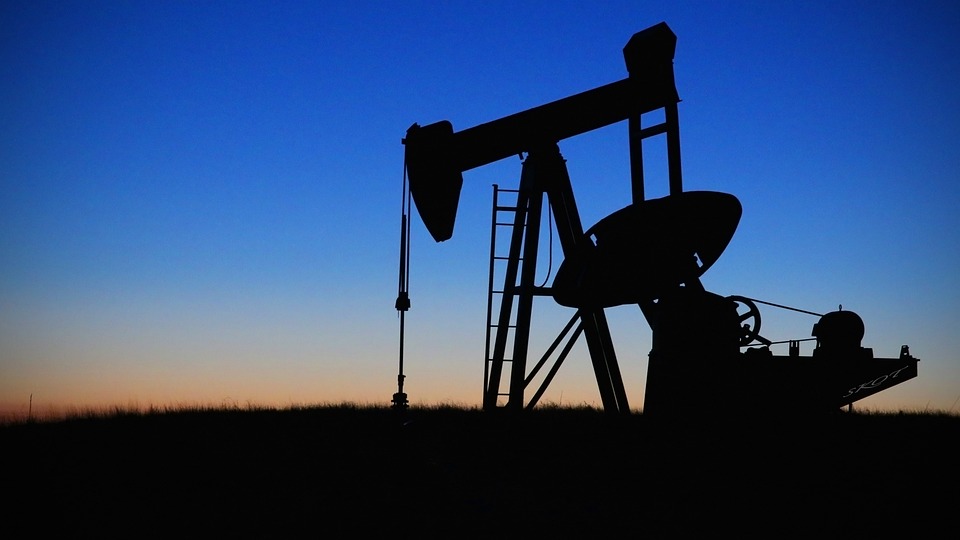Energy Report: Second Thoughts
Allegedly - it seems that Iran had second thoughts about seizing a vessel, probably because they realized that if they followed through they probably would have crossed the line that would have led to a major conflict. Reports yesterday said that Iranian-backed forces took control of a tanker in the Gulf of Oman, in an incident British authorities described as “a potential hijack.” This came after the U.S., Israel, and the U.K. all vowed to respond to a drone attack on an Israeli-linked tanker last week in a major waterway for global oil shipments that they blamed on Iran.

Image Source: Pixabay
Iran's new President Ebrahim Raisi has not been on his best behavior. The actions of Iran have been increasingly aggressive, dangerous, and provocative and not conducive to securing a deal to lift sanctions on Iranian oil. Mr. Raisi on Tuesday said he would move to lift the "tyrannical" U.S. sanctions that have decimated Iran's economy. "We will seek to lift the tyrannical sanctions imposed by America," Raisi said in a televised speech, Reuters reports. "But we will not tie the ... economy to the will of foreigners." Yet the hijackers decided to leave the ship and the vessel supposedly is now safe. Of course, the oil markets are going to have to deal with an Iranian leadership that is going to continue to be erratic.
For the oil market, it's really about concerns surrounding the covid-19 delta variant that is holding back prices. Concerns about lockdowns in China and reports by the China National Petroleum company saying that demand could fall in the short term by 5% is weighing on market sentiment even though inventory numbers in the U.S. are falling. The API reported that crude oil supply fell by 879,000 barrels. Supply was reported with an increase in Cushing, Oklahoma by 679,000 barrels. Yet gasoline supply plunged by 5.751 million barrels and distillates by 717,000.
Bloomberg reports that “For the second week in a row, the recovery in global air traffic has taken a step back. Airline seat capacity declined about a quarter of a percentage point to 68% of the amount offered in the same week of 2019 before the Covid-19 pandemic disrupted a multi-year travel expansion fueled by the rising number of middle-class tourists from China and Southeast Asia. The latest setback, attributed largely to the spread of the delta variant, follows an almost 1-point decline from the prior week, according to Bloomberg’s weekly flight tracker, which uses data from aviation specialist OAG to monitor the pulse of the comeback.
Biden's green energy policies have been great for big oil but they have not been very good for Americans pocketbooks. Most people remember that the biggest turnaround in the global oil market was 1999 when oil prices dipped below $10.00 a barrel and of course its legendary run eventually reaching over $147.00 a barrel. One of the headlines that came out during this new woke big oil generation, was the fact that Exxon Mobil's oil production hit the lowest level since well prices were at that notable low before Exxon and Mobil merged. Back then global oil demand was about 75 million barrels a day and now over 100 million barrels a day. So you might start to wonder how we are going to meet demand when oil companies stop producing oil.
Who thought that gas prices would ease after the Fourth of July? Even as crude oil had a wicked correction, retail gas prices have stayed strong. AAA reports that retail gas prices are at a 7 year high with today’s national average for regular unleaded at $3.188. as of 8/4/21. With the American Petroleum Institute reporting that gasoline supplies took another big draw, it is very clear that the US is more dependent on gasoline imports than they have been in many, many years and this means, of course, higher pump prices and that's what we're seeing.
Oil prices are trying to stabilize and on the one hand, one would expect, with demand being where it's at, that supplies should continue to tighten. Yet with the delta variant, it could create more demand destruction, and then we could have issues with the price of oil that could go lower. It's going to be touch and go here and volatile for the next couple of days. We are betting that the demand destruction will be short-lived but we can't be too sure. Still, we think that if the delta variant isn't as bad as advertised, we may see the prices make new highs by the end of August.
Natural gas is back above $4! Andrew Weissman of EBW Analytics says that resurgent heat has flipped the 1-15 day weather forecast, leading the September natural gas contract to post double-digit gains early this week. Steadily increasing cooling demand through the end of next week could add more than 5 CDDs/day and boost Henry Hub spot prices, particularly if LNG feed gas demand at Cameron recovers higher. The combination of a continued lack of sizable natural gas production gains and early signs of increasing feed gas demand at Sabine Pass Train 6 or Calcasieu Pass could add to bullish momentum.
Over the next three weeks, the natural gas storage deficit vs. the five-year average may reach new heights above 200 Bcf, refocusing the market on the second-lowest end-of-October storage trajectory of the past decade.
Disclaimer: Make sure you get signed up for exclusive info and my Daily Trade Levels by calling Phil Flynn at 888-264-5565 or email me at more



